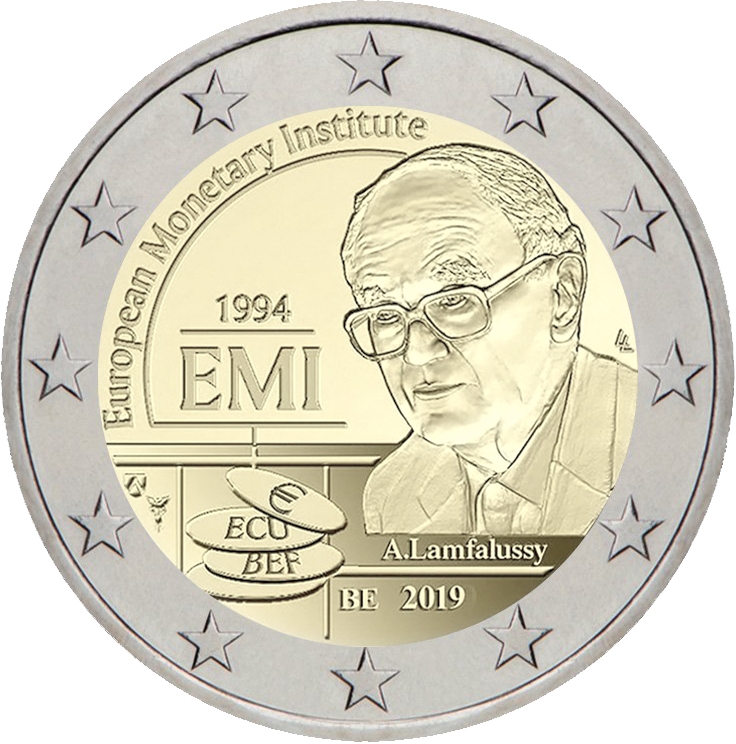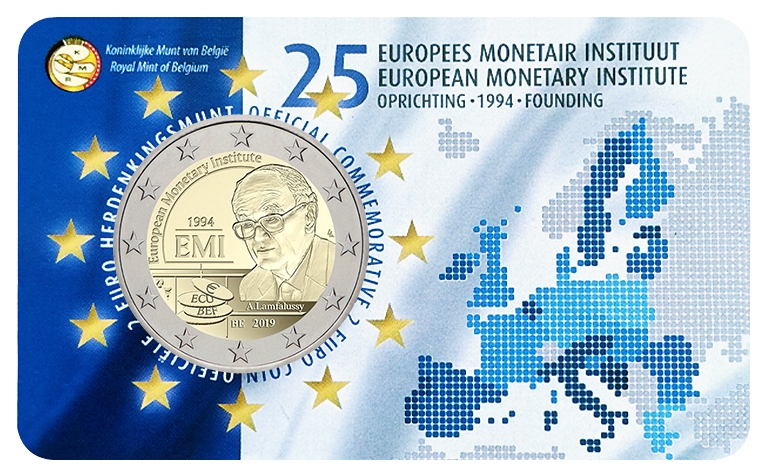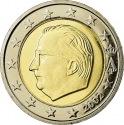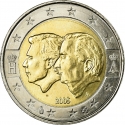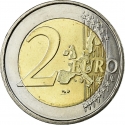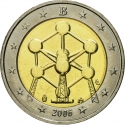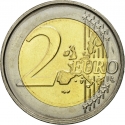You are about to finish your registration. Please check your mailbox (including spam folder). There should be a letter with a confirmation link. Check setting to make sure that your e-mail address is correct.
Send letter againDescription
The European Monetary Institute (EMI) was the forerunner of the European Central Bank (ECB). It was created 1 January 1994 and was the key monetary institution of the second phase of the Economic and Monetary Union of the European Union (EMU). The EMU encouraged cooperation between the national banks of the member states of the European Union (EU) and laid the foundation for the euro. The institute was dissolved on 1 June 1998 with the creation of the ECB and the European System of Central Banks (ESCB) which took over its expanded responsibilities as the euro was launched.
Obverse

|
Depicts a portrait of Alexandre Lamfalussy in front of circles with Euro sign, ECU (European Currency Unit, a former basket of the currencies of the European Community, precursor to the Euro) and BEF (Belgian Franc). The inscription above, date and the country code (BE for Belgium) below, the mint and privy marks on the bottom left. The outer ring depicts the twelve stars of the European flag. European Monetary Institute |
|---|---|
Reverse

|
A geographical map of Western Europe spans the outer ring and inner core on the right side of the coin. The inscription 2 EURO is superimposed over the map of Europe, with the numeral “2” located in an open field representing the eastern Atlantic Ocean. 2 EURO |
| Edge |
The sequence "2 ★ ★" repeated six times alternately upright and inverted 2 ★ ★ 2 ★ ★ 2 ★ ★ 2 ★ ★ 2 ★ ★ 2 ★ ★ |
Swap now (1 offer)
Characteristics
| Type | Commemorative Issue (Non-circulating) |
| Material | Bi-Metallic |
| Ring | Cupronickel |
| Center | Nickel Brass |
| Weight | 8.5 g |
| Diameter | 25.75 mm |
| Thickness | 2.2 mm |
| Shape |
|
| Alignment | Medal |
| Mint |
Royal Dutch Mint (KNM)
|
